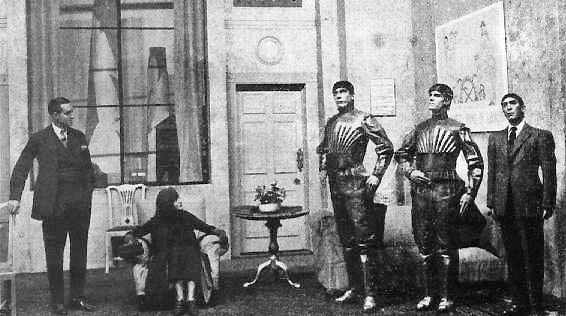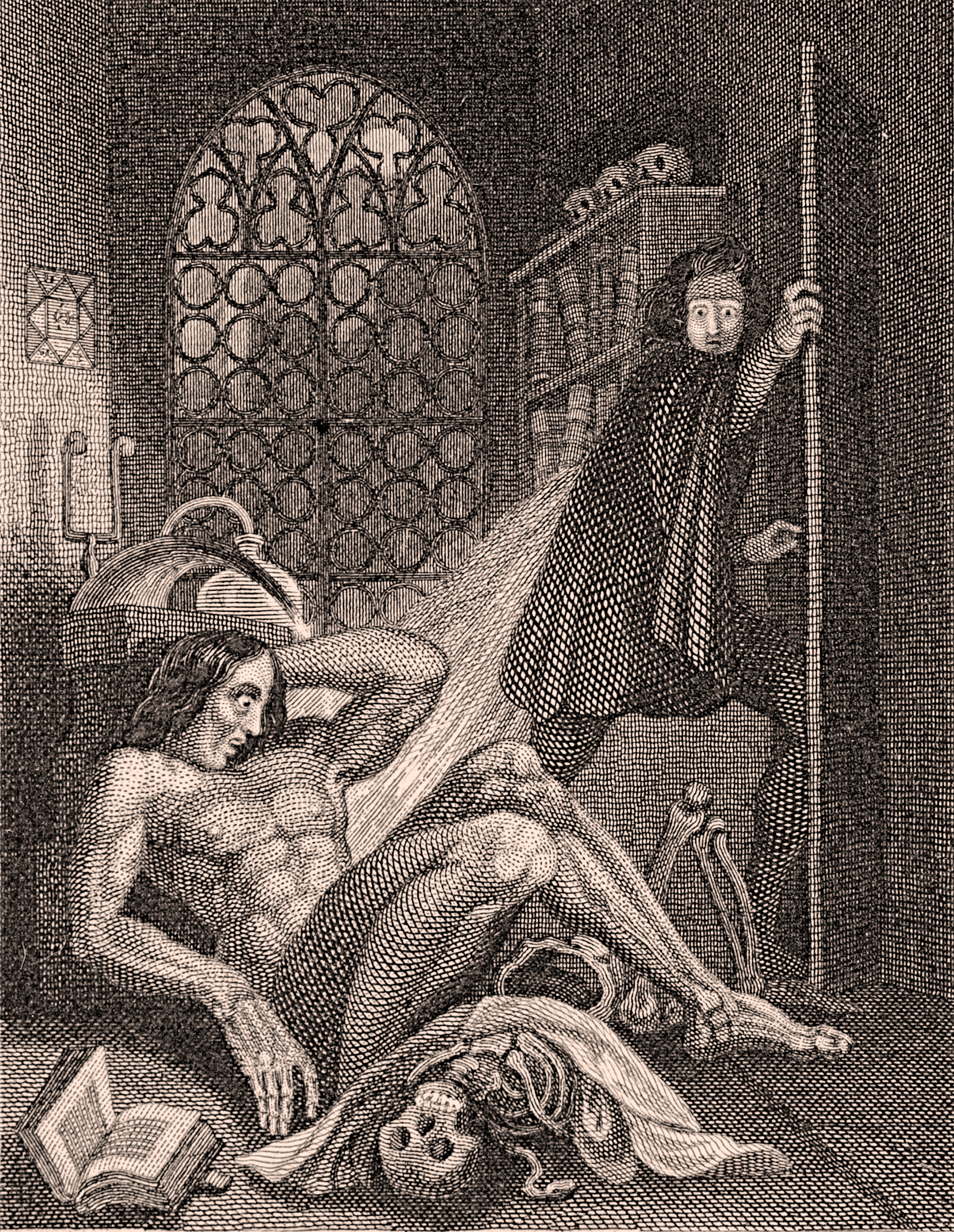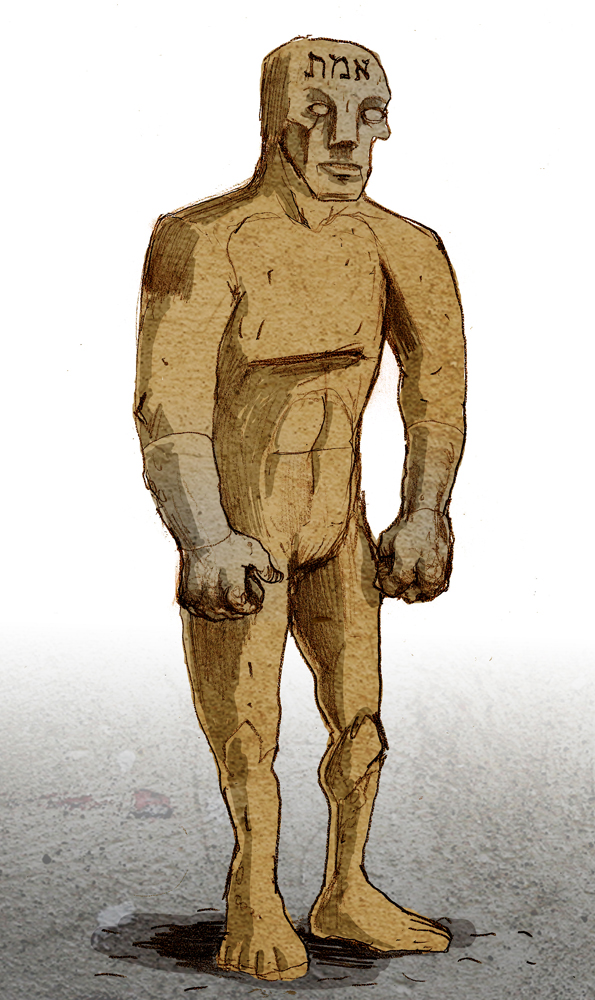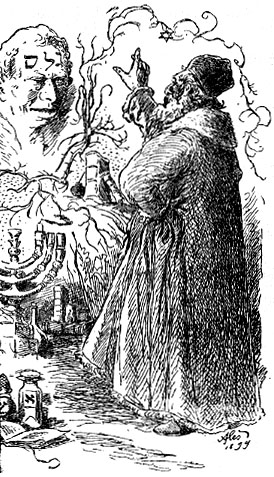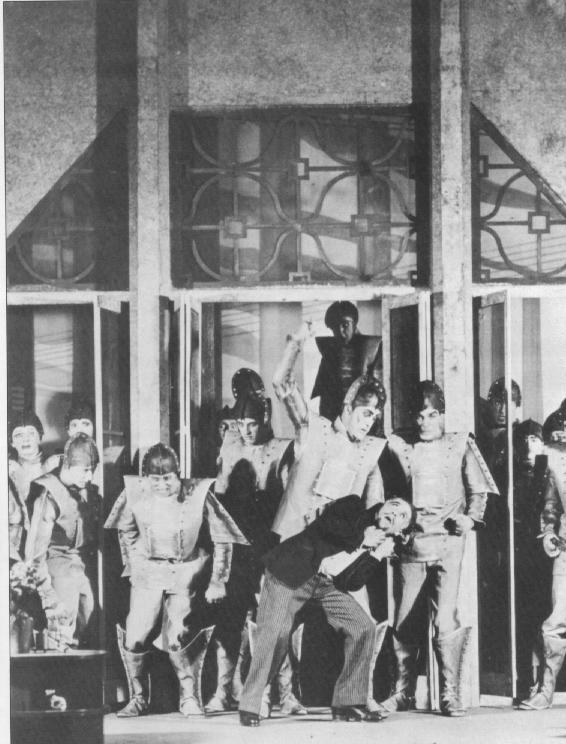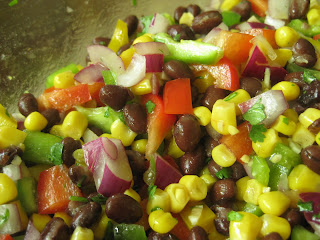It was my dad's birthday, and I decided to bake him a cake.
"That's great, Alice!" you're probably thinking. "You're a professional pastry cook. What could be easier than baking your dad a cake?"
Well.
It's not quite as easy as it sounds.
The cake turned out beautifully--it really was one of the nicest cakes I remember making. But WHOAH, it wasn't easy. To tell the truth, it was pretty frustrating.
You see, home baking is very different from professional baking, and my experience in the kitchen that morning has made me think a lot about the differences between the two.
As a pastry cook at a bakery, you can assume that you've got work space, all the tools you need, and all the ingredients that you need. (This is because you're not the pastry chef, who's probably constantly worried about inventory.) Since you use it several times a day, you figured out the bakery oven's quirks a long time ago (hot spots, the difference between its set temperature and actual temperature, etc). You're almost always working with a recipe that's tried-and-true: the bakery knows what works, has worked out the kinks, has worked out the method. If you're trying out a new recipe, you're going to be slower at it, but you've at least got a few other people who can weigh in with their opinions every step of the way.
At home, it's all on you. You aren't part of a team (well, unless you make a point to bake with a friend?) It's up to
you to figure out your workspace, to gather your tools and ingredients, to figure out how much time to give yourself to do anything. And, if you're like I am at home, you're probably trying a new recipe. (There are
so many out there to try! How could I stick to just
one?)
So, while I waited for my "Chocolate Fudge Cake" (brought to you by the baking goddess Rose Levy Beranbaum) to cool, I decided not to write about this specific cake. At least, not yet. I decided to reflect on my successful-but-slightly-painful home baking experience and to write down my advice for a successful, pain-free home baking experience. Maybe you'll get something out of it. And maybe next time, I'll follow my own advice!
For Successful, Pain-Free Home Baking:
I love to cook. I love improvising while I'm in the midst of cooking something new and off-the-wall, grabbing some ingredient on a last-minute whim and tossing it into the skillet or roasting pan. It's brilliant!
Baking is not cooking. Baking is a much more precise science/art that requires forethought and chemical balance. Sure, there's always
some wiggle room--you may decide to add cranberries to your scones at the last minute instead of currants, or maybe an extra whack of nutmeg--but each baking recipe pretty strictly adheres to a balance of dry to liquid, a balance of tenderizing elements to structure-providing elements. The recipe is important. Find it, figure out the changes (if any) you're going to make,
write down the changes you're going to make, and then stick to your plan!
(Personally, I wrote down the ingredients for two different cake recipes when I set off for the shop, figuring I'd decide on one when I got there. Heh. Anyone want the extra container of sour cream I'm never going to use? I also apparently didn't give much thought to how I would decorate the cake, since the ganache-covering-and-setting process would've taken much more time than I allotted for myself. I ended up assembling a lovely last-minute buttercream with incomplete ingredients--something I was only comfortable doing after a year-or-so of making simple buttercreams.)
 2. Visualize the process.
2. Visualize the process.
Read through the recipe, imagine yourself doing each thing it instructs, and imagine yourself doing the changes you planned out (and wrote down). If you aren't sure how to do something, then find an easier recipe. Or teach yourself how to do it if you're up to it (well-written cookbooks and internet how-tos are beautiful things). Try to figure out how long it'll take you to do each thing. Imagine how long it'll take for the baked good to cool before you can decorate it (and overestimate this if you're in doubt.) Imagine what ingredients you're going to use, what bowls you're going to use, what tools you're going to use, and what the final product is going to be baked in/on.
And--I know it sounds a pinch OCD, but--write down all the tools and ingredients you'll be using. This way, you're making a point to yourself that you
need these things, and you're not just thinking, "Yeah, yeah, I'll be cooling the cake." This way, you make sure you have a cooling rack. It takes a little time at the beginning, but it saves a lot of time and last-minute-scrambling-hassle at the end, when you're searching desperately for that cooling rack (or second cooling rack?) you thought you had.
3. Make sure you have everything.
I mean
everything. Make sure you own and can locate every single thing you need before you even think about starting. This doesn't just mean ingredients: this means tools, towels, space and time!
If you've written this all down and thought it through, this usually means one trip to the shop at the most. I can't
count the number of times I've had to run to the grocery store a second (*cough* or third *cough*) time halfway through baking or cooking something. This has been my learning experience.

But it's far easier and more forgiving to turn the heat off many partially
cooked dishes to run out for what you need than it is to run out on something halfway through a
baking recipe.
Keep in mind: baking soda (bicarbonate of soda) starts doing its thing as soon as it hits a liquid--it needs to go in the oven as soon as possible after that. Beaten egg whites and whipped cream both fall if they sit too long. Once yeast has been activated, it can foam up for a little while, but it'll need some sugars sooner or later, or it'll die. Recipes often call for butter at room temperature, and, if you leave refrigerated butter on top of the oven to warm while you run to the local supermarket, which inevitably does
not sell cake flour, you're going to return (with or without cake flour) to find a pool of melted butter on the oven. Mmm. Trust me, it's not fun.
Clear and clean your counter space so that you can spread out and do everything that you need to do without shuffling one bowl one way and the mixer the other. I personally try to clear off as much counter space as the kitchen allows because I inevitably take up more space than I could possibly imagine. Make sure you have space in the dishwasher or sink to throw all your dirty tools. Make sure you have room in the trash can/bin to throw away all your egg shells. Again, it sounds a bit OCD, but it's an ounce of prevention for things that are a
b!tch of a pound to cure.
Pull out your ingredients, but make sure they're in a safe place that's not going to get wet. (Yeeeah, it sucks to find a 5-pound bag of flour sitting on a wet countertop.) Pull out your bowls and tools and try to consolidate them to one tool-grabbing spot.
5. Obtain and use an oven thermometer.
This isn't necessary, but it's pretty close. There are few things more frustrating to an infrequent baker than to realize halfway through the baking process that the cake
just isn't rising for
no known reason only to learn much later that his/her oven runs 20 degrees colder than it claims to. Just go ahead and invest in an oven thermometer. Try hanging it in a few different places in the oven over time to figure out hot and cool spots in your specific oven. And give yourself plenty of time to preheat your oven--at least 20 minutes. I've found that my own oven changes temperature
drastically between the time the "preheat" light goes out and the time the temperature actually reaches a pretty level state. And that temperature is usually 15ºF cooler than my digital display wants to claim.
4. Keep checking the recipe as you go.
The easiest way to screw something up while you're baking is to assume that you know how to do it. If you've gotten into the habit of creaming your fats and sugars and
then adding your dry ingredients, this is definitely going to be the
one recipe that needs you to do things a little differently. If you've spent your life trying
not to knead a quick bread, trust me: this will be the one quick bread that needs a little knead. It's nearly inevitable. Read and re-read the recipe as you go, and follow it every step of the way.
 5. Be patient.
5. Be patient.
This is most important once you've placed something in the oven. Many baked things need an initial boost of very high temperature to rise once they've reached the oven--opening the oven door to check on them in the first few minutes can very easily destroy that process. Opening the door for more than a moment during the first half of the baking process just might destroy it. I usually try to leave the oven alone for at least half the estimated baking time before I feel comfortable opening the door, rotating things and moving them around to bake evenly, and seeing how they're coming along.
6. Clean as you go--quietly!
"Clean as you go," my mom and grandmother (and probably great-grandmother) always said, meaning clean up
while you prepare your food. It's a great concept, but I'm really bad at this when I'm cooking. It seems there's always something to do in the direction of preparing a dish, or preparing another dish, or getting the table ready for the meal, and I always end up with a messy kitchen that's just a horrible chore to clean once everyone's bellies are full and sleepy.

One of the things that I really like about baking is that there's a pocket of time after I put things in the oven that's
perfect for me to clean things up a bit. What's really important, though, is to clean up
quietly. Large vibrations--like throwing bowls in the sink, dropping the loose front to the dishwasher, or stomping around like a two-year-old because you're angry that you have to clean up--can easily shake what you've got in the oven and keep it from rising, or make it deflate once it's already risen.
I like to challenge myself to clean up as quickly and as quietly as I can, in rounds that start on one end of the kitchen and work their way to the other, clearing counter space by moving things back into their places or into the sink or dishwasher, then wiping down counter space, then washing things off by hand if it's needed. This not only keeps me from feeling really frustrated that my kitchen's a disaster zone by the end of it all--it also suppresses the urge to open the oven door to check on my delicate creation before it's ready to face the cold kitchen air or the inevitable man-handling of even the most conscientious cook once he/she rotates it for even baking.
7. Keep a close eye when it's nearly done.
I think the real trick to baking something great is the ability to pull it out of the oven
just when it's done, and not a moment sooner or later.
What this means is that, if a recipe tells you something's gonna take 15 minutes, keep a suspicious eye on it after 10. It should still look liquidy at that point, but at least you'll know if it's not. Start checking the thing after 12 or 13 minutes, by either feeling it gently (to see how far it is from "springy to the touch") or pricking it with a toothpick. Obviously, don't do either of these things if it still looks pretty liquidy and wobbly, as any disturbance may cause it to deflate. But if it's looking like the finished product, give it a poke. If it's cookies, they're going to firm up a lot after they come out of the oven, so the best way to tell is to look at their coloration and the firmness of their edges.
There's a decent chance the thing's done before the recipe says so. And, if it's something small like mini cupcakes or mini cookies, the matter of 30 seconds or 1 minute changes
everything. At this point, it becomes a nuisance because you're literally re-setting the timer and re-checking the thing every time you turn around, but this is the point where it's really worth it. There's nothing sadder than walking back to a cake after 3 minutes of down-time to find that the toothpick comes out clean and that the cake is a lot drier than it probably could've been if it'd only been checked after 1 additional minute, instead of 3.
The more often you do a specific recipe or kind of recipe, the better feel you'll have for how something looks along the way, and you'll be able to give something 5 or 10 extra minutes instead of the 1 or 2 a decently paranoid baker might allow, just because you know that something will need that much more time. You'll know that something's browning faster on top than you'd like for it to bake through, so you can place it lower in the oven (or closer to one of the "cool spots" your thermometer has found) too keep it baking through without burning. But when you're trying out a new recipe, or trying to scale something up or (more importantly) down, it's much better to be safe than sorry. Keep an eye on your thermometer, keep an eye on your minute-to-minute timer, and keep an eye on your baking until it seems
just right.
8. Take notes.
This is something I think I picked up from Rose Levy Beranbaum's approach to baking. She has a few good stories about disastrous baking attempts early in her baking career. But she was destined to be great, I think, because she was always determined to figure out
why something went badly, or
why it went well, and she's always been meticulous in recording her recipe tweaks and their end results.
So I've gotten into a habit of making notes every time I bake something at home. If I use a different flour than is called for, or if I suspect my baking soda is pretty old (or extremely fresh), I write it down. If the bake time is different from the recipe's, I make note of it--it's a good thing to know. And if my biscuits turn out to be the fluffiest things I've ever seen, I'll be sure to do it all the same again! Likewise, if the thing's a disaster, I won't have wasted my time: I'll at least have a guess or two about what went wrong, and I'll hopefully fix it the next time around.
This isn't tedious or time-consuming. Just keep a pencil and a sticky note on hand, write down anything you might want to remember later on, and stick the note on the recipe for your future self. Even though it may not cause your home-baking experience to be painless this time around, it might help you in the next go-round!
9. Enjoy what you've got!
Love and share what you've got, even if it's disappointing. There's such a slim chance that it's an absolute failure that's worthy of the bin/trash.

This is something I still need to work on. I view an end product with a critical eye, picking apart what's imperfect, what needs improvement, what could change next time around. This is a useful quality in a way, but it's kept me from enjoying what's ultimately a treat--which is meant to be enjoyed, and nothing more.
Even if your cake has collapsed, it's probably still delicious--that much butter and sugar
has to taste good! And I'll bet you
money that your underbaked cookies are not going to give you salmonella--they will only give you a warm, happy feeling of smiley love. And your
overbaked cookies will be perfect when they're dipped in milk or tea or coffee, provided they're not black.
Nowadays, we can get our sugar and fat fixes for a few cents apiece from humongous manufacturers that extrude every single thing flawlessly into identically soulless packages that fall down unimaginably inhuman metallic chutes and into fluorescently-lit megastores that can easily cater to our every whim without even
minimal human contact.
The home-baked good is one of the few things left that trumps this, that defeats this idea with a simple act of beauty, and care, and love, and time.
You can present someone with something you've baked yourself, and you can say, "There. I
made this. I
created this. I took the time to make this
one thing just for you, and I did my best to make it great. And, you know, I don't do this all the time. It's a special, once-or-twice-a-year kinda thing I do, and so it didn't turn out picture perfect. But I can see you're delighted that I did this just for you, so let's spoil ourselves and eat a few slices of cake. And let's relish every single bite. Because this is a beautiful, intimate
treat."
And, you know, I guess that's my soul laid bare, right there. It's a beautiful baked treat--be it bread or cake or whathaveyou--that's set out and so thoroughly enjoyed that it just makes everyone swell with happiness. Yeah. I think that's as close to the meaning of life as I've gotten so far.
So, what do you think? Any tricks or tips you've figured out during your home baking adventures?


















